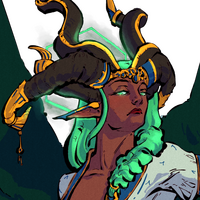Angelis Island
Angelis Island is one of the largest islands within Jupiter, and by far the most well known. Stories of this island stretch trillions of light years away into the depths of the Yonderverse, even if people have never heard of the planet it belongs to. The island is completely encased within the River Of Life, a major river system that flows from Jupiter's Core to Jupiter's Edge.
Cultural Influence
Jovians have made their mark in space for thousands of years, first appearing in space roughly four thousand years ago. These people worship Angelis Island, for it has turned into a safe refuge from the dangerous animals that lurk round the corners of Jupiter, which says a lot as the average jovian weighs a thousand kilograms. People that make pilgrimages to Angelis Island always bring home a small pebble, as a reminder of the journey they took.
As jovians travelled round space, they shared their love of Angelis Island with the people they met. They would use these pebbles as gifts, symbols of alliances.
Ecology
Angelis Island, thanks to its nigh-inaccessibility from dry air, has many endemic species. Some species that somehow made it to the island hundreds, thousands, or millions of years ago found refuge in this floating rock and over time they formed self-sustaining ecosystems. There are 234 recorded aurvad species, 193 birds, 28 mammals, 4 reptiles, 63 amphibians, 18 arthropods, and 72 insect species, among others.
A whopping 63% of the species on Angelis Island cannot be found anywhere else on the planet.









Is there a Demonic Underisland too?